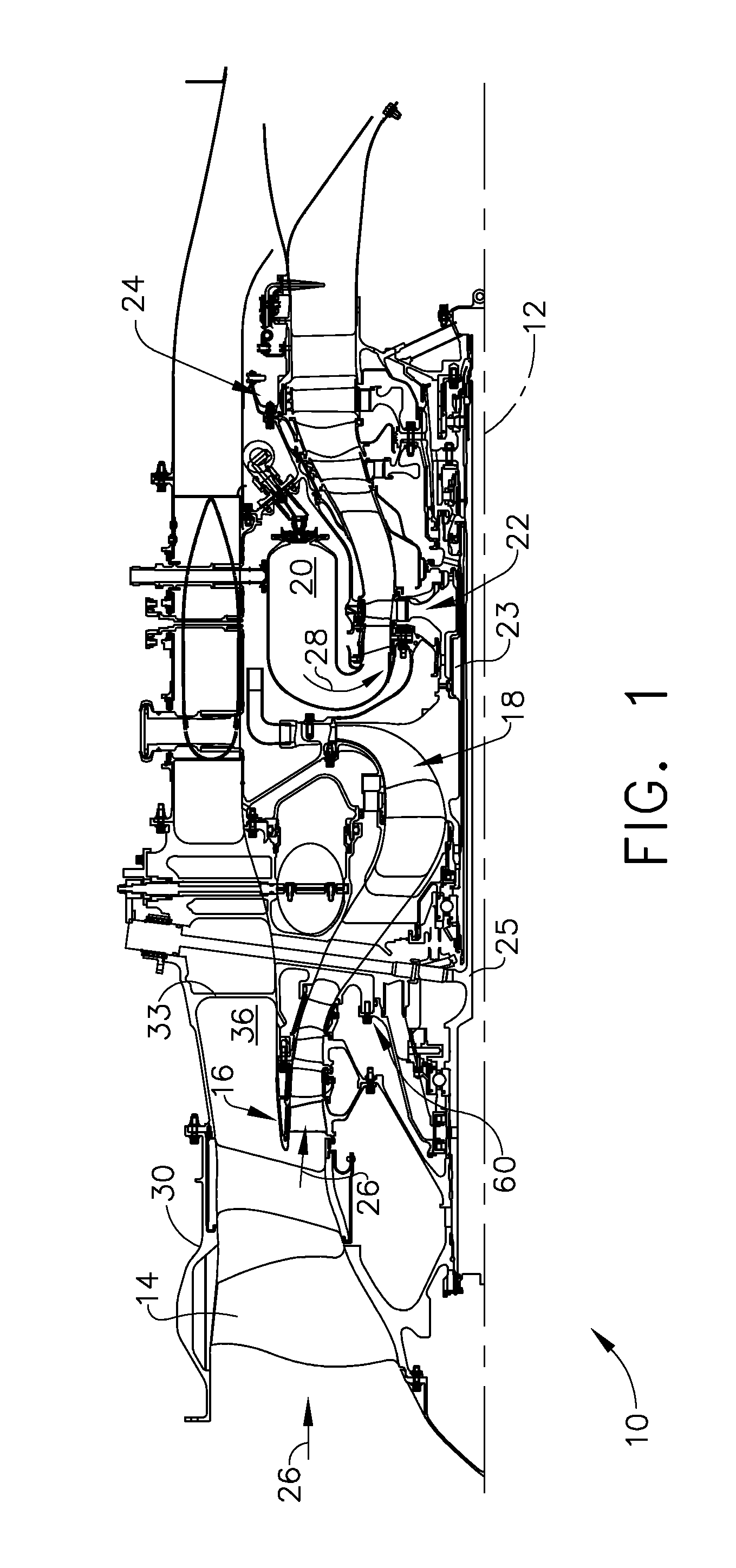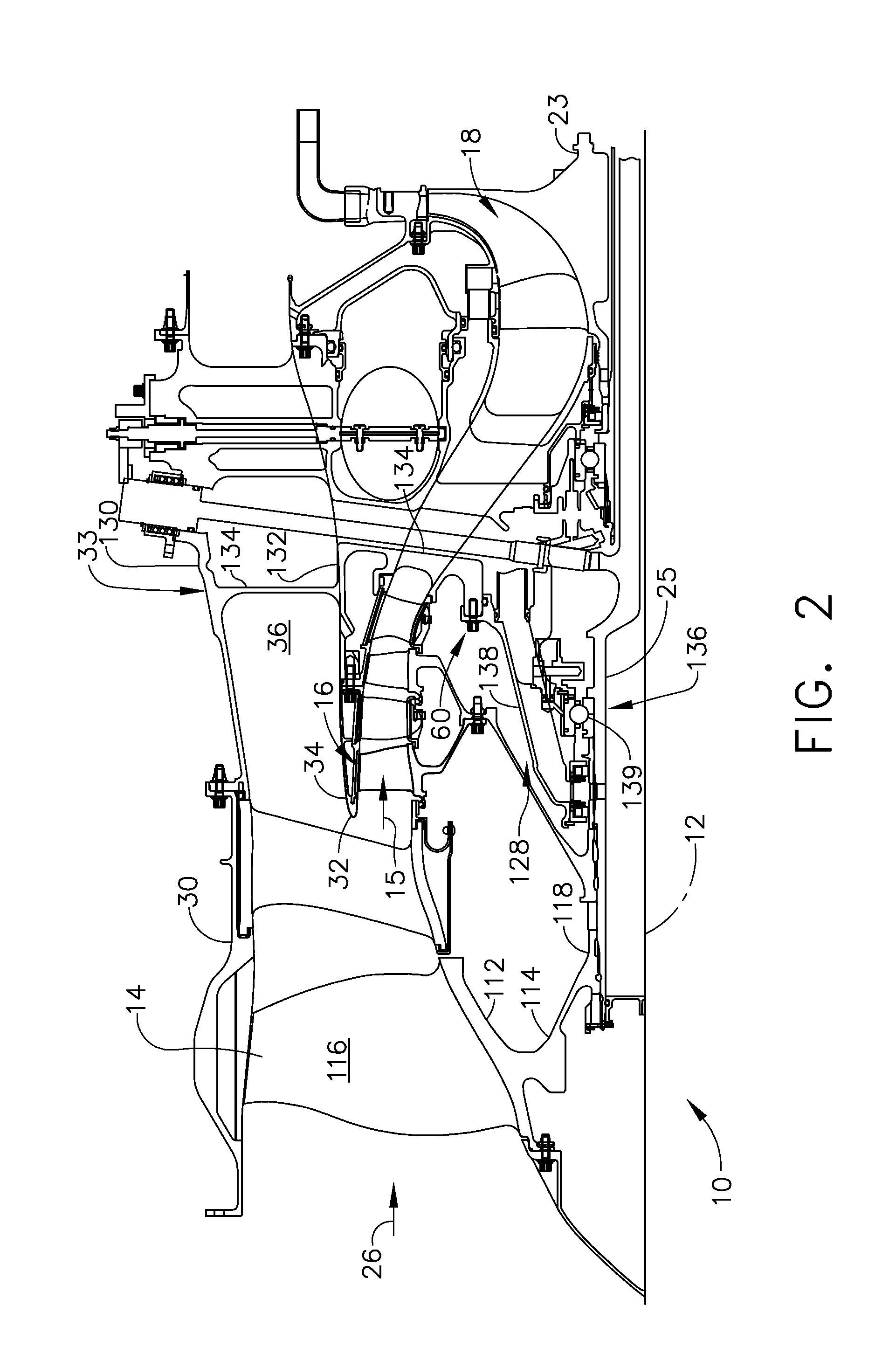Dynamic load reduction system
a load reduction and dynamic technology, applied in the direction of machines/engines, couplings, liquid fuel engines, etc., can solve the problems of fan blade loss, fan blade loss, fan blade loss, etc., and achieve the effect of large rotor imbalan
- Summary
- Abstract
- Description
- Claims
- Application Information
AI Technical Summary
Benefits of technology
Problems solved by technology
Method used
Image
Examples
Embodiment Construction
[0022]Illustrated in FIGS. 1 and 2 is an exemplary aircraft turbofan gas turbine engine 10 circumscribed about an engine centerline axis 12 and suitably designed to be mounted to a wing or fuselage of an aircraft. The engine 10 includes, in downstream serial flow communication, a fan 14, a low pressure compressor or booster 16, a high pressure compressor 18, a combustor 20, a high pressure turbine (HPT) 22, and a low pressure turbine (LPT) 24. The HPT or high pressure turbine 22 is joined by a high pressure drive shaft 23 to the high pressure compressor 18. The LPT or low pressure turbine 24 is joined by a low pressure drive shaft 25 to both the fan 14 and the booster 16.
[0023]In typical operation, air 26 is pressurized by the fan 14 and produces an inner air flow 15 channeled through the booster 16 which further pressurizes the inner air flow 15. The pressurized air is then flowed to the high pressure compressor 18 which further pressurizes the air. The pressurized air is mixed wit...
PUM
 Login to View More
Login to View More Abstract
Description
Claims
Application Information
 Login to View More
Login to View More - R&D
- Intellectual Property
- Life Sciences
- Materials
- Tech Scout
- Unparalleled Data Quality
- Higher Quality Content
- 60% Fewer Hallucinations
Browse by: Latest US Patents, China's latest patents, Technical Efficacy Thesaurus, Application Domain, Technology Topic, Popular Technical Reports.
© 2025 PatSnap. All rights reserved.Legal|Privacy policy|Modern Slavery Act Transparency Statement|Sitemap|About US| Contact US: help@patsnap.com



